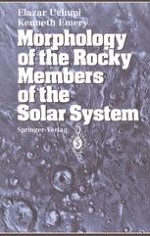
1993 | OriginalPaper | Buchkapitel
Introduction
verfasst von : Professor Dr. Elazar Uchupi, Professor Dr. Kenneth O. Emery
Erschienen in: Morphology of the Rocky Members of the Solar System
Verlag: Springer Berlin Heidelberg
Enthalten in: Professional Book Archive
Aktivieren Sie unsere intelligente Suche, um passende Fachinhalte oder Patente zu finden.
Wählen Sie Textabschnitte aus um mit Künstlicher Intelligenz passenden Patente zu finden. powered by
Markieren Sie Textabschnitte, um KI-gestützt weitere passende Inhalte zu finden. powered by
In the vastness of space, nine planets, 27 moons having diameters larger than 100 km, and thousands of smaller bodies orbit around a star that is not much different from many other stars in the Universe. The third planet from the Sun appears quite blue from space as a result of its extensive hydrosphere, an envelope that made possible the creation of life. Streaks of white depict the circulation of its atmospheric cover. Since inception, its biosphere has deeply influenced the Earth’s development, so much so that it can be conceived as being the prime agent of the Earth’s morphological evolution. The geohistory of Earth includes the effects of another agent — massive lateral tectonic transport of crustal plates induced by convection circulation within the planet’s interior — a tectonic regime that has led to changes in its surface morphology, its climate, and even its biosphere as the latter adapted to ever-changing habitats. In this inquiry we look at Earth’s rocky companions in the Solar System to determine how similar or different was their development from that of the Earth, then we attempt to ascertain the causes of these differences. Such a goal has been made possible by recent observations of the planets via unmanned satellites and actual landings by man and vehicles; these observations have yielded many publications during the past two decades. As our own geological field experience has been restricted to our planet, we have made extensive use of these publications.